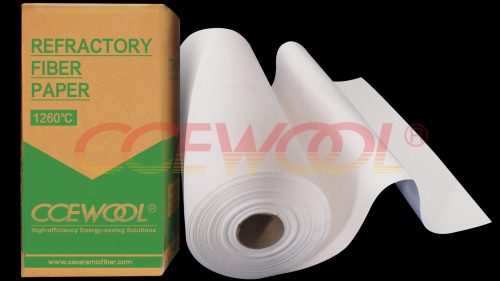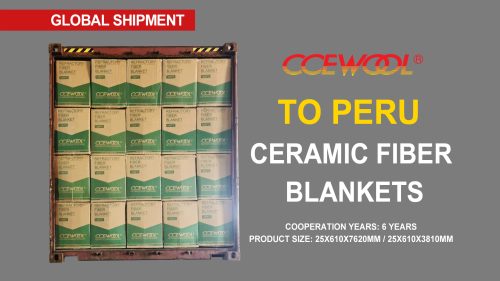What temperature does ceramic wool insulation?
- 09 Oct, 2024
- Industry

In modern industry, the selection of insulation materials is crucial, especially in high-temperature operations, where high-temperature-resistant insulation materials can effectively improve energy efficiency and ensure the safe operation of equipment. Ceramic wool insulation, as a lightweight, high-temperature-resistant insulation material, is gradually becoming the preferred choice for high-temperature insulation across various industries.
What is CCEWOOL® Ceramic Wool Insulation?
CCEWOOL® ceramic wool insulation is a high-temperature-resistant fiber material made from high-purity alumina and silicate, melted at high temperatures and processed using special techniques. With its excellent thermal insulation performance and lightweight properties, CCEWOOL® ceramic wool insulation is widely used for insulation in industrial furnaces, boilers, pipelines, chimneys, and other equipment, especially in high-temperature environments requiring insulation and energy saving.
The Temperature Range of CCEWOOL® Ceramic Wool Insulation
Depending on the product model, the temperature resistance of CCEWOOL® ceramic wool insulation ranges from 1000°C to 1430°C. Below are the temperature ranges of some major products:
CCEWOOL® 1260 Ceramic Fiber: This product has a maximum working temperature of up to 1260°C and is suitable for general high-temperature insulation applications such as industrial furnace linings, furnace door seals, and high-temperature pipeline insulation.
CCEWOOL® 1400 Ceramic Fiber: With a working temperature of up to 1400°C, this product is suitable for higher-temperature industrial furnaces and heat treatment equipment, providing effective insulation solutions for extreme high-temperature environments.
CCEWOOL® 1430 Ceramic Fiber: This product can withstand temperatures of up to 1430°C, making it ideal for ultra-high-temperature industries such as steel smelting and glass production, ensuring stable operation in harsh environments.
Why Choose CCEWOOL® Ceramic Wool Insulation?
Outstanding High-Temperature Resistance: CCEWOOL® ceramic wool insulation has exceptional heat resistance, capable of working stably at temperatures as high as 1600°C, making it ideal for insulating various high-temperature equipment.
Excellent Insulation Performance: Ceramic wool insulation has a low thermal conductivity, providing excellent insulation, effectively reducing heat loss, improving energy efficiency, and helping companies save on energy costs.
Lightweight and High Strength: Compared to traditional refractory materials, ceramic fiber is lightweight yet strong, allowing for high-quality insulation while keeping equipment structures lightweight.
Eco-Friendly and Healthy: In addition to offering traditional ceramic fibers, CCEWOOL® has introduced low biopersistent fibers (LBP) and polycrystalline fibers (PCW), which not only provide excellent insulation performance but also meet international environmental standards, reducing impact on human health.
In the field of high-temperature insulation, choosing the right insulation material is crucial. With its outstanding high-temperature resistance, insulation performance, and eco-friendly advantages, CCEWOOL® ceramic wool insulation has become the preferred choice for numerous industrial customers worldwide. Whether it’s for industrial furnaces, high-temperature pipelines, or other high-temperature equipment, CCEWOOL® ceramic wool insulation provides reliable insulation protection, helping companies improve energy efficiency and performance.



